Art Fairs
Collectors Explore Burgeoning Market at India Art Fair
India's young but growing art market has plenty to offer.
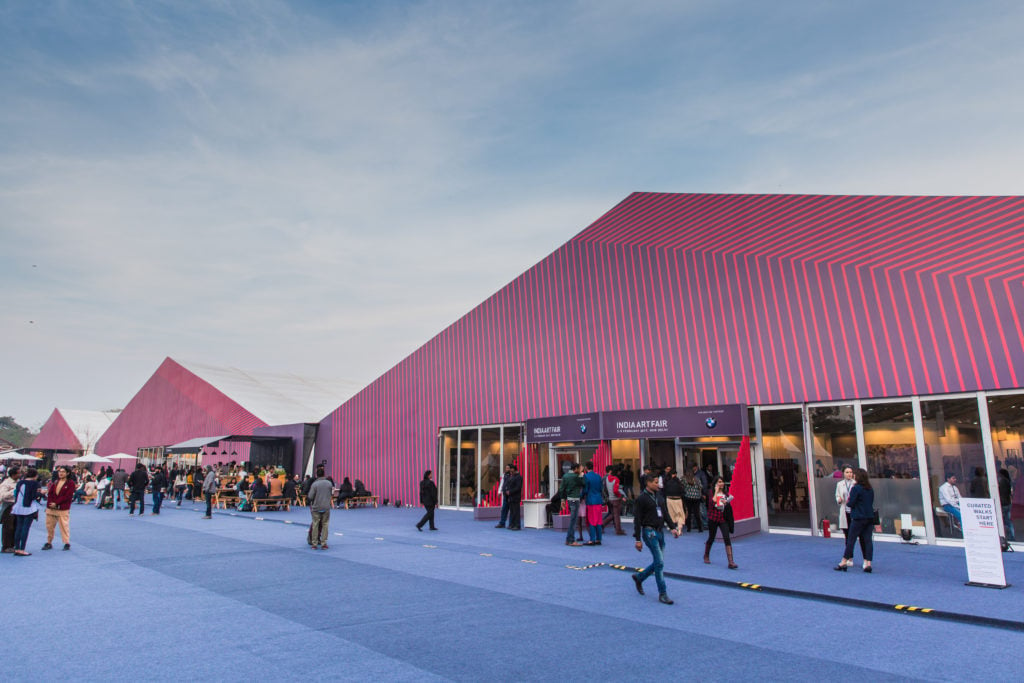
India's young but growing art market has plenty to offer.

Skye Arundhati Thomas

The ninth edition of the India Art Fair opened on February 2 in New Delhi with a large turnout at the collector’s preview. “There are people that have flown in their private jets for two, three hours,” Neha Kirpal, the fair’s dynamic and young director, told artnet News.
The art world, as ever, presses on despite the country’s current economic conditions, which remain unstable. The demonetization policy implemented late last year, whether you admit it or not, continues to affect the country’s financial flexibility.
However, at the close of day two, galleries remained optimistic, with some of the strongest local names already having sold out most of their booths. Among them was Experimenter, a gallery from Kolkata that has seen terrific success over the last two or three years. “This fair is not just about participation for us but home ground where we have to represent; it is a combined responsibility that we share with the fair to show and position work that is representative of our time,” said Priyanka Raja, co-founder and director of the gallery.
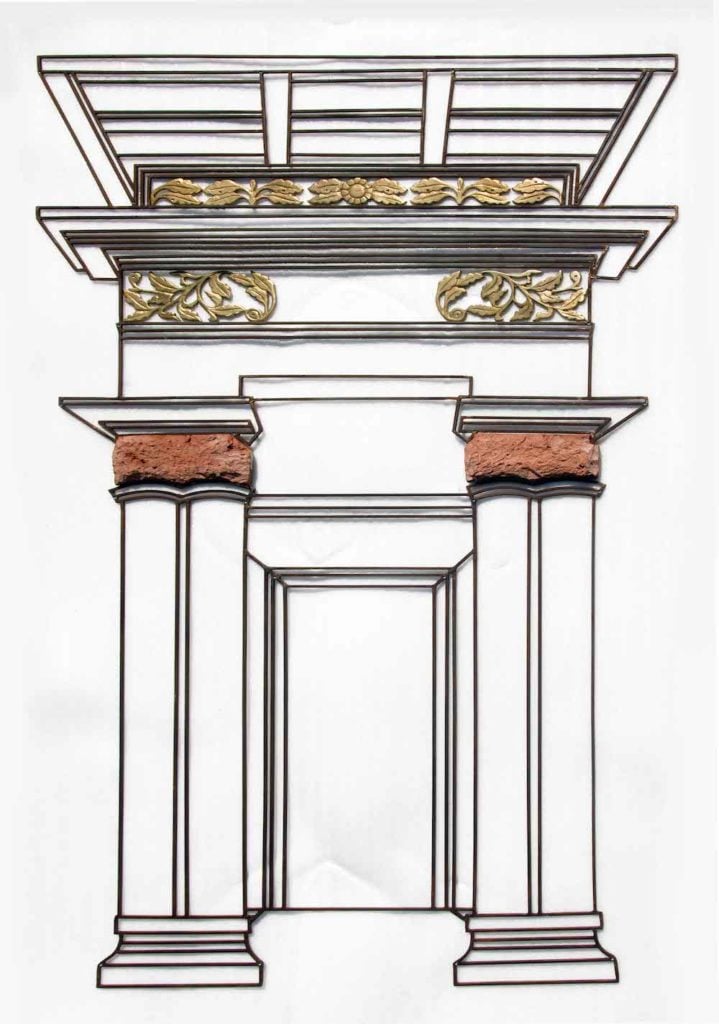
Rathin Barman, ‘Reconciling Abandoned Architectural Spaces III’ (2016). Photo Courtesy: Experimenter.
As a commercially successful and thus significant art fair in the South Asian region, India Art Fair has a wide scope, hosting galleries from across the region—most notably from India’s neighboring countries of Bangladesh, Sri Lanka, and Nepal—and showcasing a diverse set of nationalities, including the presence of several Pakistani artists.
This is rather timely, as the country needs to show now, more than ever, a cultural solidarity with the region as a whole. On the topic, Kirpal maintains a clear perspective, admitting “we didn’t talk to our neighbors that much before,” which certainly is true. She hopes that with the fair as a platform, “communities can build in solidarity with each other and not in isolation as they have previously.”
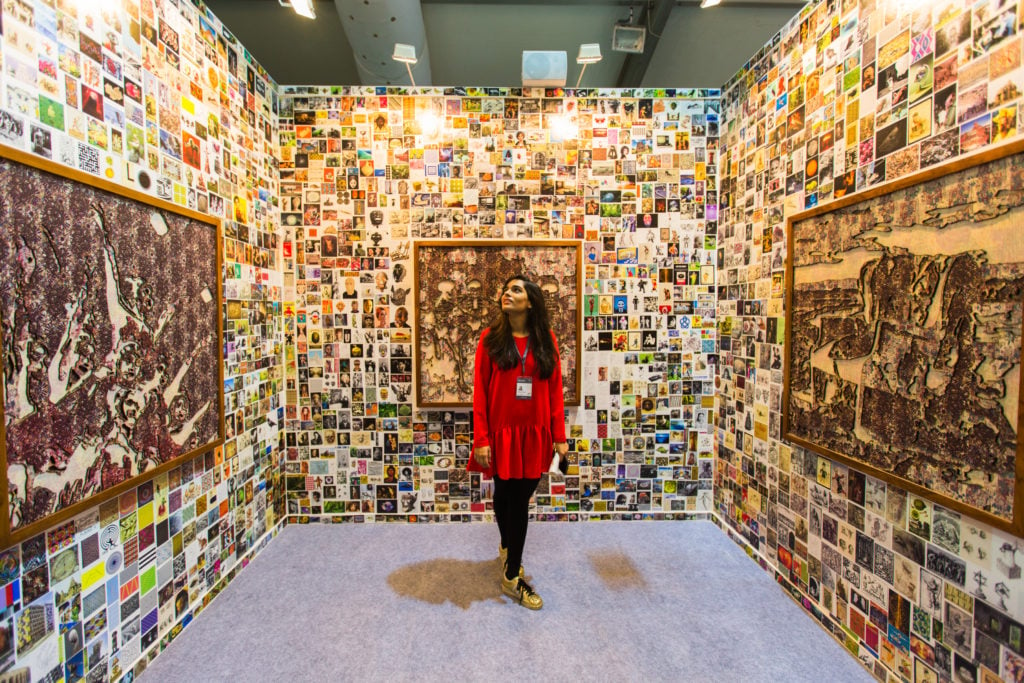
Avinash Veeraraghavan, ‘Dwell in Possibility.’ Art Project at India Art Fair 2017, supported by GALLERYSKE. Photo Courtesy: Andy Barnham.
Second time visitor and regional collector Kamiar Maleki suggested that although it is still growing, the fair is an exciting place to visit, “I collect young emerging artists, and I have never had a geographic boundary when I collect. I don’t know this market and I really came to study it, and I am still studying it!”
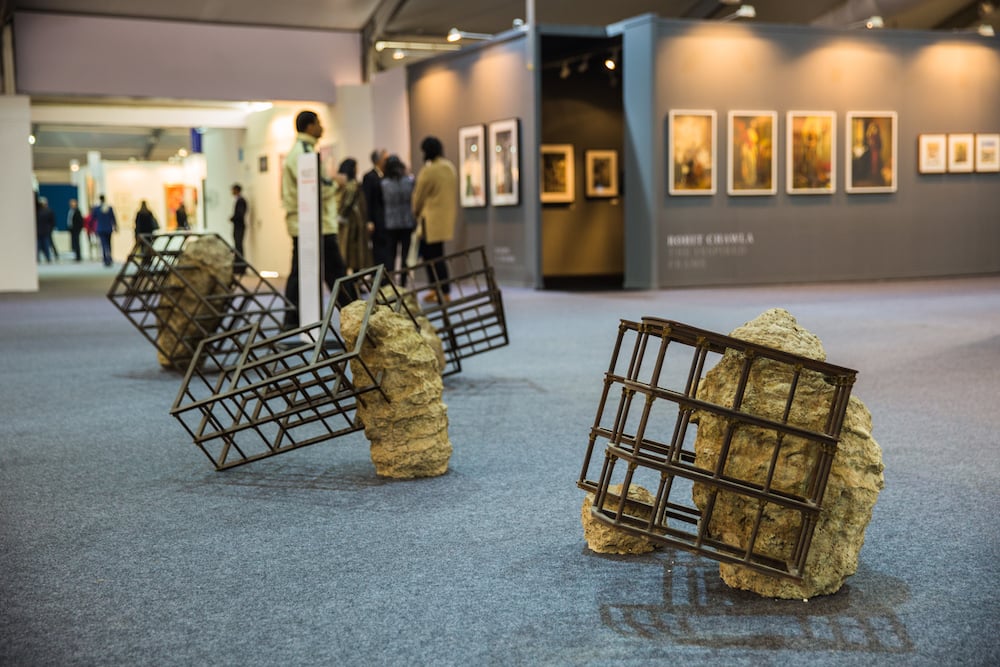
Rathin Barman, ‘One, and the Other’. Art Project at India Art Fair 2017, supported by Experimenter. Photo Courtesy: Andy Barnham.
It is difficult to get galleries or dealers to talk prices here, perhaps in part because the regional market is still at a nascent stage, where things feel much more tentative than usual. From what we could gather, there is a wide range of prices represented, with more affordable works at $1,200 to reports of Modernist work selling for upwards of $8 million. The fair does well, particularly, in the section where it plays host to several old and established galleries that deal with the secondary sale of modernist work. Dag Modern, for instance, has put on a large survey of mid-1800 to late-1990s Indian art with a Francis Newton Souza work, Man and Woman Laughing, priced at $8 million.
Aicon Gallery which maintains a focus on South Asian work in New York, sold an Anila Quayyum Agha work, Shimmering Mirage (2016), in the region of $45,000, as well as two other similar works at $100,000. The Kiran Nadar Museum of Art, Delhi, purchased significant works by artists Naeem Mohaiemen and Prabhakar Pachpute from Experimenter for their private collection. Contemporary art galleries such as Chemould Gallery, Mumbai; Nature Morte, New Delhi; and GALLERYSKE, Bangalore and New Delhi, have all reported very strong sales.
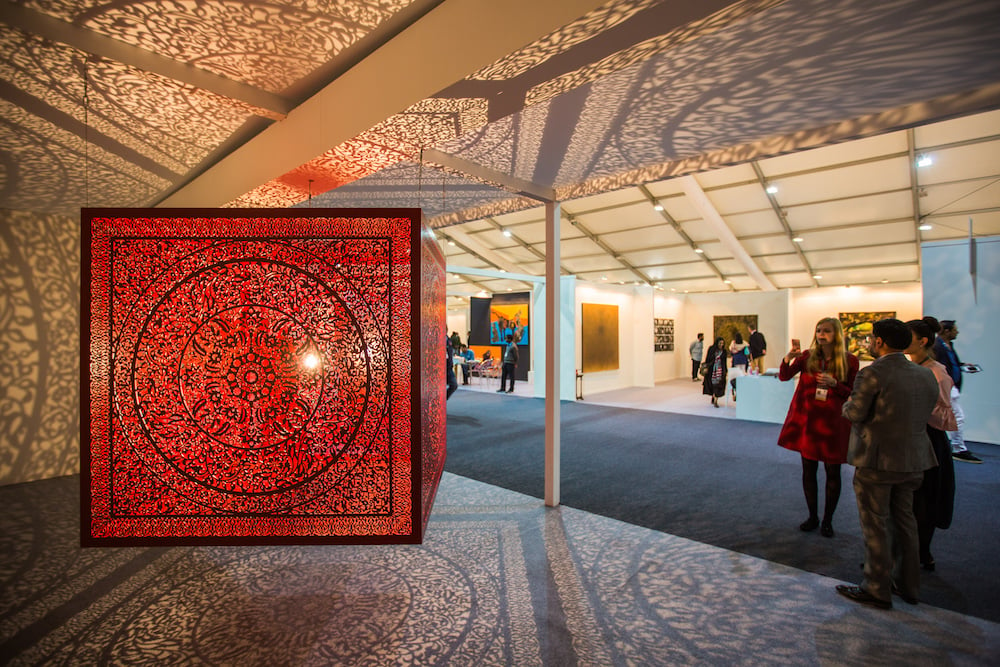
Anila Quayyum Agha, ‘ALL THE FLOWERS ARE FOR ME’ Agha presented by Aicon Galleryat the India Art Fair 2017. Photo Courtesy: Andy Barnham.
The fair does see a list of important institutions visit every year, with this edition pulling together a particularly diverse list, from the Ashmolean Museum in Oxford, UK; to contemporary art heavyweights like the UK’s Tate (new director, Maria Balshaw, could be seen making rounds on the opening days); New York’s Metropolitan Museum of Art, Guggenheim, and Museum of Modern Art. Also present were the Louvre Abu Dhabi and the Sharjah Art Foundation, UAE; the Asia Society Museum, Singapore; as well as a European presence from Paris’s Musée Guimet and Palais de Tokyo, and London’s Gasworks.
However, there is a lack of risk—or a sentiment towards agreeability—as gallerists are looking to appease the market here by putting on work that will be accessible to audience requirements and preference. There is quite a lot of painting, and very little video or sound work.
Photojournalist product, however, is popular, most notably with the archival retrospective of Kanu Gandhi’s intimate photographs of Mahatma Gandhi and his followers, a project supported by Photoink, New Delhi, a gallery invested in the resurfacing lost or forgotten archives. Also significant is the presence of Athenian gallery Kalfayan, a fair veteran, this year showing tenacious works by dynamic duo, Kalos&Klio.
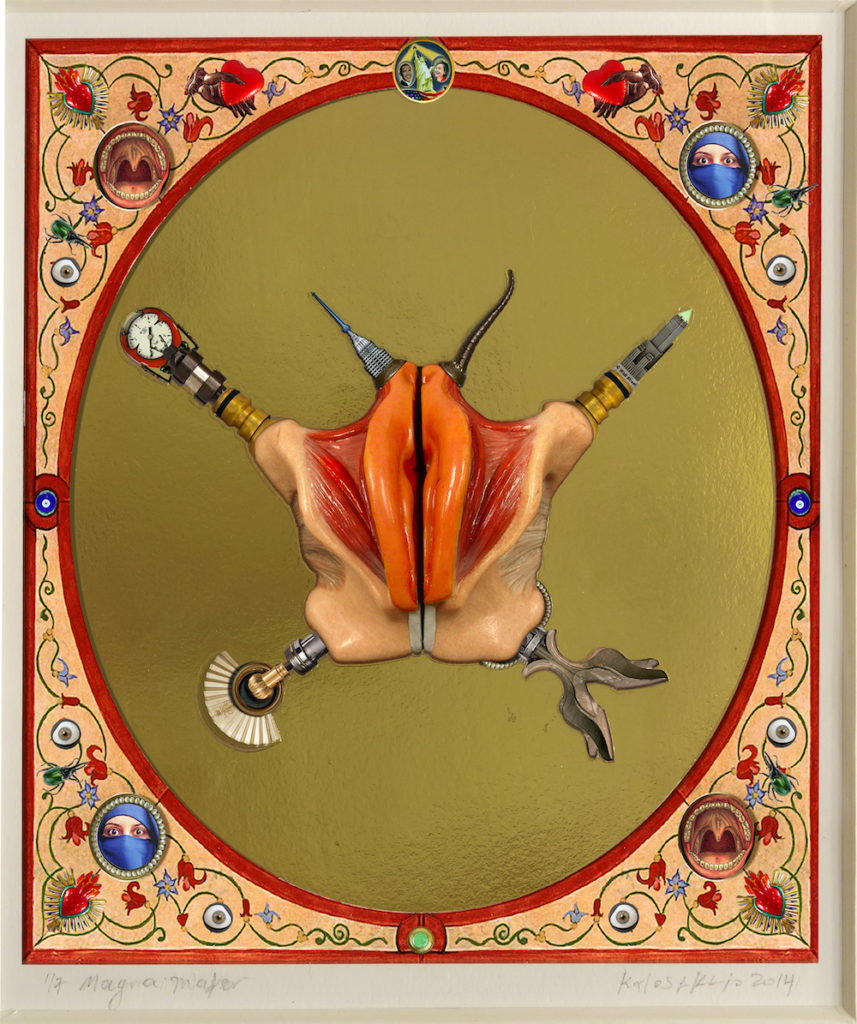
Kalos&Klio, ‘Magna Matter’ (2014) Photo Courtesy: Kalfayan Galleries, Athens-Thessaloniki.
It must be mentioned that galleries are showing a considerable amount of work by young and upcoming artists—more so than at other fairs—which seems to be a way to cultivate a young collector’s market, as well as for collectors to grow with the galleries in the coming years.
Collector Komal Shah, whose holdings center on female abstractionist painting, told us that she believes the fair also sees a remarkable presence of work by women in the booths, not to mention that the most interesting and high-profile galleries have female directors. Artist Bharti Kher is a prominent figure, her work being shown by several dealers, including two striking new sculptures on view at GALLERYSKE, Bangalore and New Delhi.
![Bharti Kher, The intermediaries [14] (2017). Photo Courtesy: The artist and GALLERYSKE.](https://news.artnet.com/app/news-upload/2017/02/Intermediaries-14-Bharti-Kher-683x1024.jpeg)
Bharti Kher, ‘The intermediaries [14]’ (2017). Photo Courtesy: The artist and GALLERYSKE.